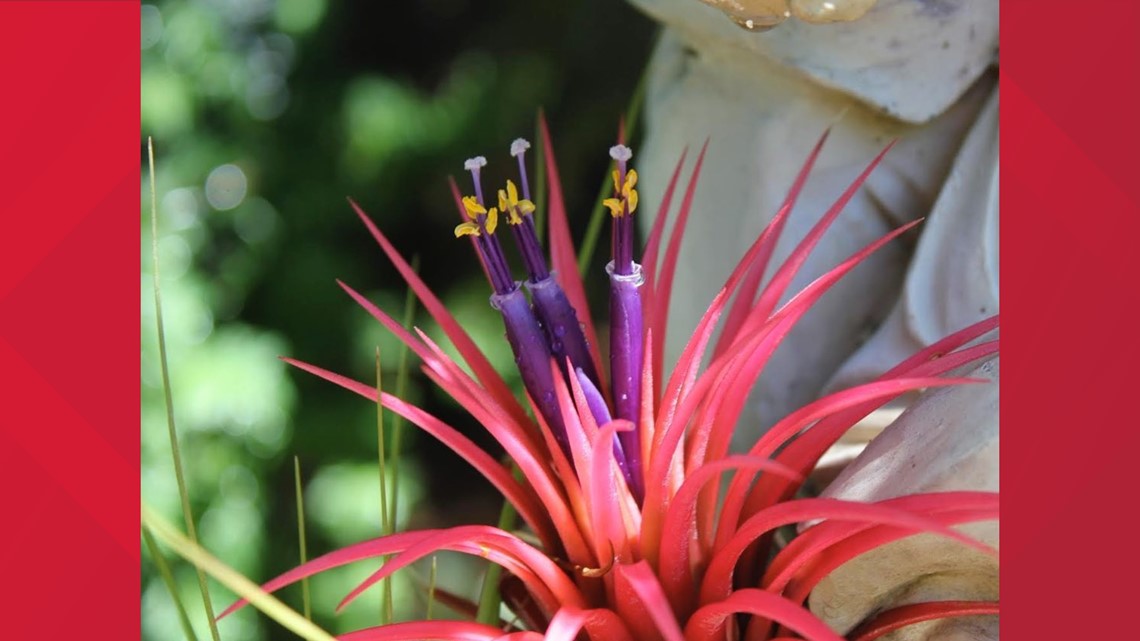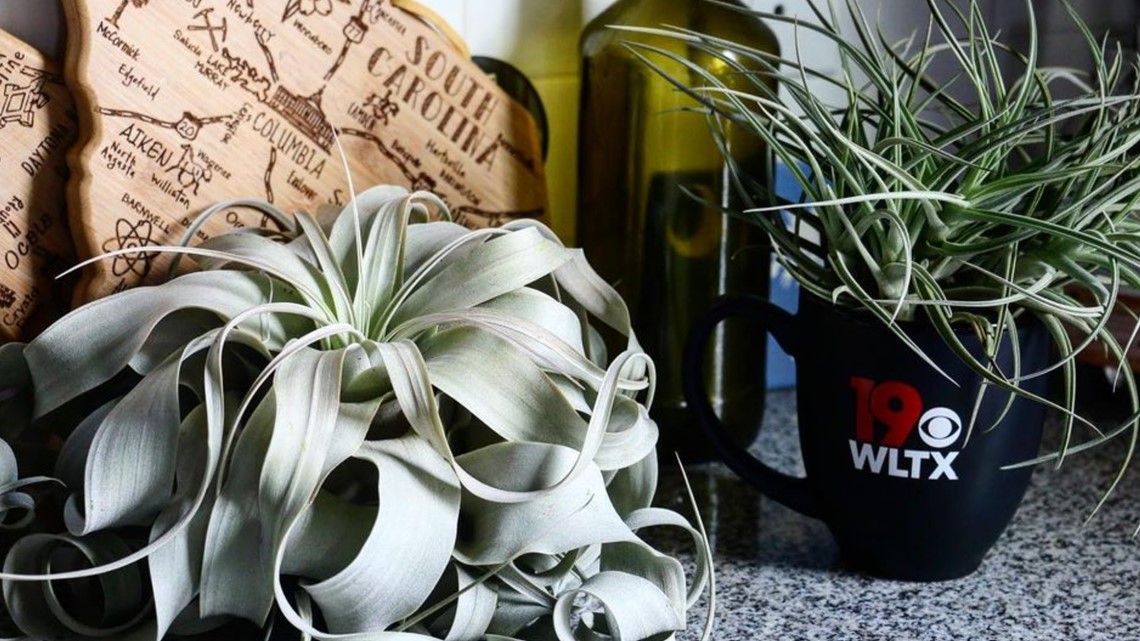“Air plants” are a step above those other plants (literally!)
Tillandsias (a.k.a. air plants) grow without roots or soil. They’re a type of bromeliad, just like pineapples. In the tropics, air plants are found on trees, where they absorb water and nutrients from their own leaves using trichomes.
Tillandsias make great outdoor plants in South Carolina during the summer because they thrive in humidity. They look great in wreaths or dangling on a wire where their funky leaves and colorful blooms can really show off. Despite their notoriety as an exotic plant, they're actually several species native to South Carolina. The most famous is Spanish moss, which is often mistaken as moss, but is actually a bromeliad!
Ideally, air plants thrive in a shady spot during the summertime without much attention or care, but they may need an occasional misting with the hose if the weather is very dry or hot. Most air plant species are tropical and should be brought inside if the weather drops below freezing. Spanish moss is the most cold tolerant species of Tillandsia family and can survive temperature drops briefly below 20F.
Air plants can be grown indoors if given the right care. Some species of air plants need too much humidity to thrive in an indoor environment, but some of the most popular types make very happy indoor plants with just a weekly soaking of water. Air plants require good air circulation and do not like to have water sit on their foliage for long periods of time so make sure the water doesn't pool in the center for long. Some people recommend letting air plants hang upside down for a few minutes after their weekly soaking.
Here's a look at a few of the most popular air plant species...
Tillandsia Ionantha (Sky plant)
The adorable leaves make this one of the most popular air plants available. The plant has tubular purple blooms and the entire plant turns red! The red coloration is likely a natural adaptation to attract hummingbirds to the very tiny flowers. It certainly will attract the attention of people as well!


Tillandsia xerographica
The blooms aren't as impressive as Tillandsia ionantha, but the plant is much larger with fascinating foliage. The leaves can reach over a foot long and are typically curly. The silver foliage is an adaption that allows this species to tolerate drier air which is why it's such a great choice for being inside.


Tillandsia usneoides (Spanish Moss)
Spanish moss is a fascinating plant. The thin leaves actually create new plants as it grows. A piece of danging spanish moss could be divided into hundreds of new, smaller plants. It's native across the southeast coast and as far inland as the Congaree River in Columbia. Birds frequently use spanish moss as nesting material. Doing so actually helps spread the moss to new trees. This plant does not make a great candidate for indoor gardeners because they require a lot of humidity and airflow.



